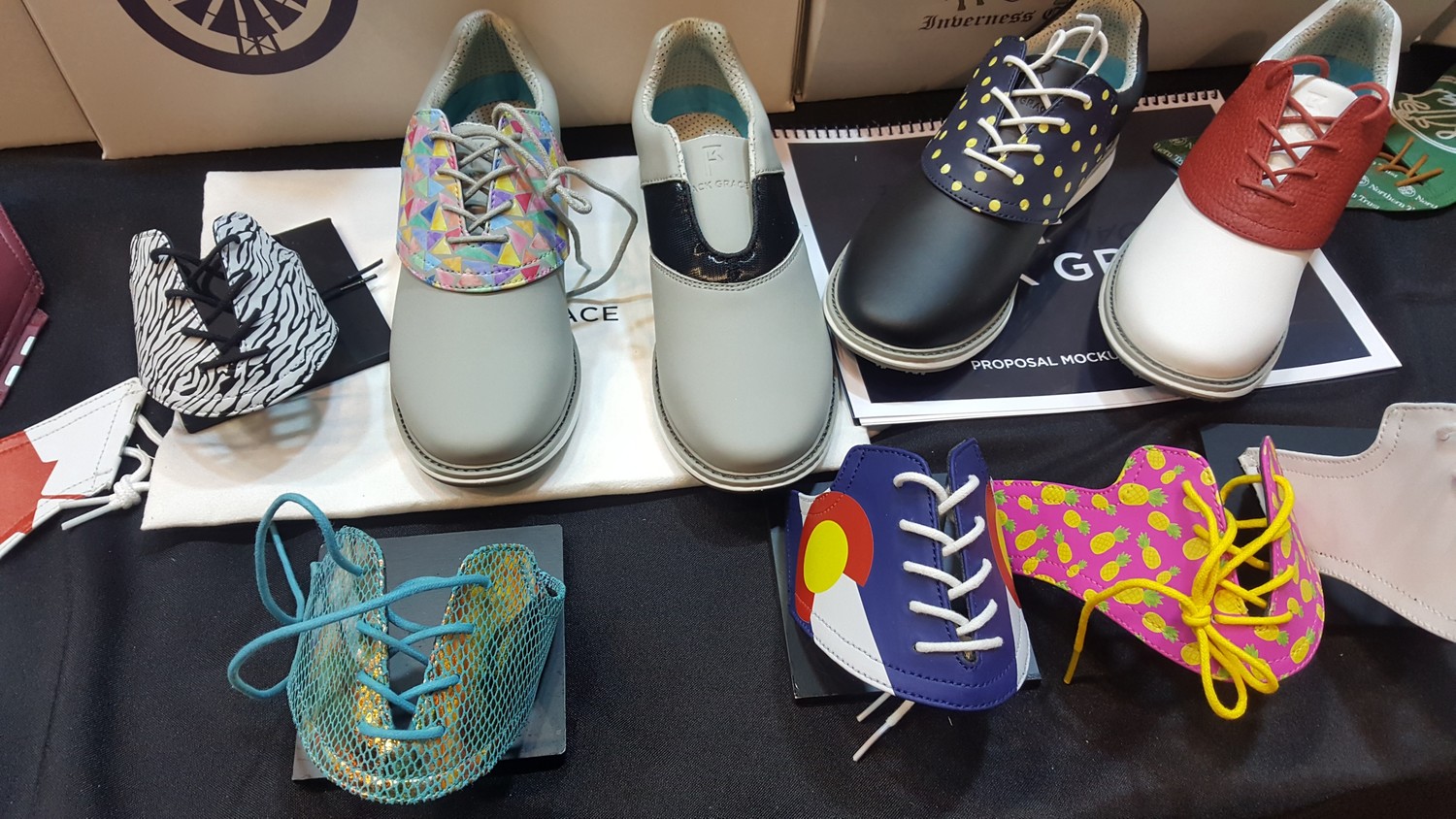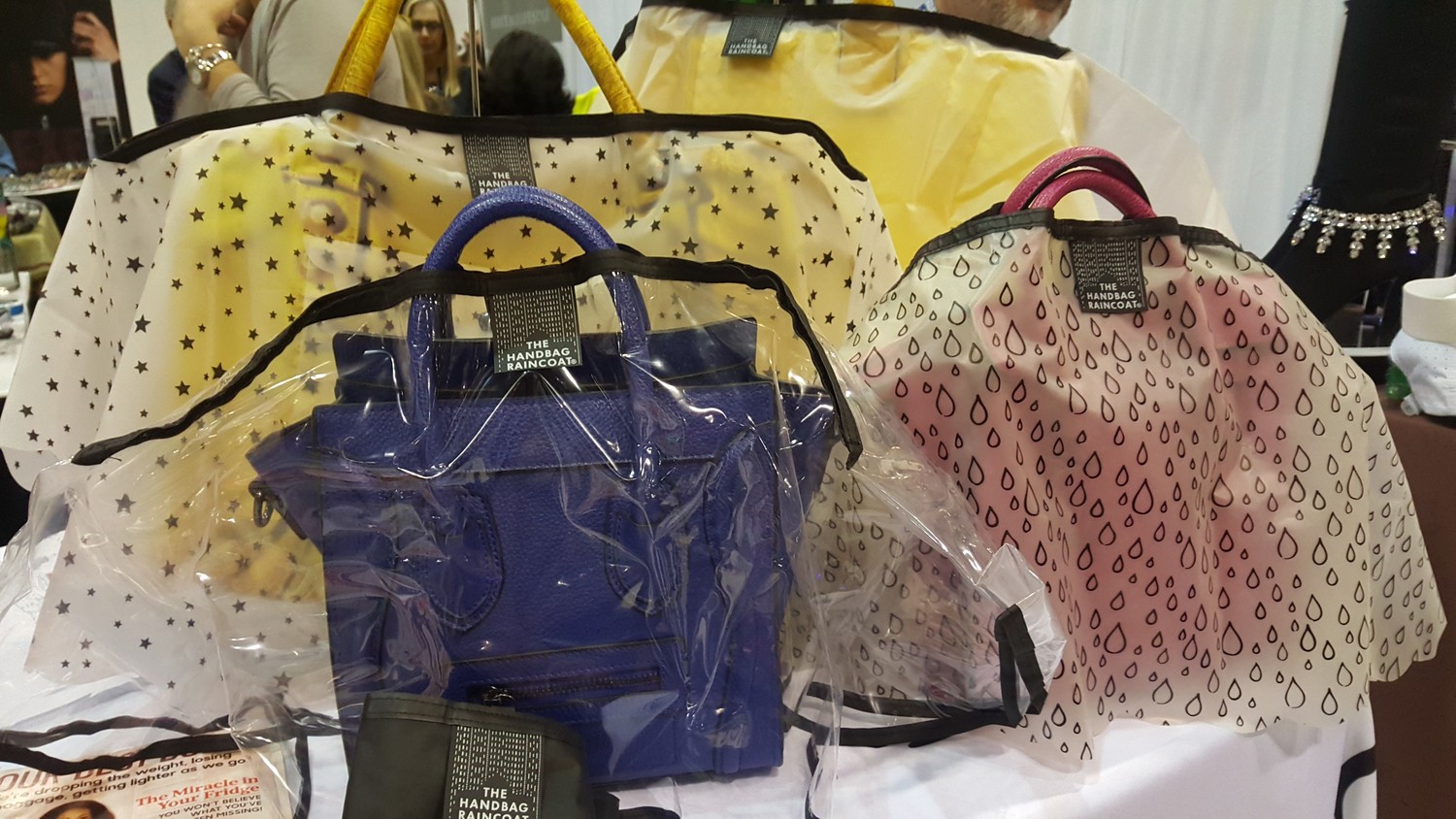Inventors behind the inventions
Every year, it seems, there are more and more new products from the fertile minds of people who think about ways to improve things in and around golf. The assortment grows every season, almost exponentially. Golf inventors are just plain and unstoppable forces of nature.
Here are a few stories of those inventors and their products as THE PLAYERS Championship takes Ponte Vedra Beach by storm.
Jack Grace changeable shoes
Bart Walker didn’t start out to have a shoe company.
He was a banker, who liked shoes. He just wanted to make something really fashion-forward for himself. He cut up old shoes and designed something in the kitchen like a lot of inventors do. Finally, he got someone to make the shoes for him. His friends liked them, so he continued to work on the project, and soon it became a business.
After a while, the business became so successful that he and his wife Erinn quit their day jobs to focus on what became Jack Grace shoes.
Here’s how it works: Golfers buy the base shoe with a saddle in one color. Then, they buy saddles in different patterns and colors. There are 25 basic colors, and there are printed saddles with fish, sharks, paisleys, plaids, ginghams, Norwegian or Canadian flags, college logos and more. If someone buys several saddles, they give that person a break on the price.
The shoes are not expensive by golf shoe standards. They’re $160 in black, white or gray. And there’s an option to buy a shoe plus a group of four saddles, sometimes themed, for $260. There’s also a starter bundle with the shoe and three saddles for about $230. Saddles can be bought separately or in bundles. Single saddles alone are $40 each.
The saddles attach with special, small magnets that snap onto the sides of the shoes, making changing them out fast, easy and fun.
As Walker pointed out, he would never spend the money to buy new golf shoes to change his look. But new saddles? No brainer.
The company does customization, depending on the quantities. Visit https://www.jackgraceusa.com/ for more information.
Eye-Putt-Pro
If you’re having trouble with your putting, it might be what your eyes are seeing or what position they are in before you putt.
Most putting experts will tell you that you should have your eyes right over the ball. Whether yours are there or not is testable by taking your putting stance and then without moving anything else, dropping a coin from where your eyes are to see where it lands. If it lands on the ball, your eyes are in the right place.
While that’s good for diagnosing the problem, it’s not good for fixing it. However, Casey Schiel, a PGA pro in Denver, came up with a small level and mirror system that lets you check where your eyes are and practice putting with them stationed over the ball in the right place. If you have not tried this before, it can be a little disconcerting to see eyes reflecting from your putter, but you’ll just have to trust that it works. Pretty soon, muscle memory kicks in and you’ll be putting with the right eye alignment.
The Eye Putt Pro attaches with adhesive strips or magnets, and there are extra adhesives for you in the package. It’s $19.95 at golf shops, via http://www.eyeputtpro.com/ or on Amazon.com.
The Handbag Raincoat
Handbag raincoat? This is where any woman says, “Why on earth didn’t I think of that?”
Yes, it’s a raincoat for your purse.
Ok, I know we are all about golf here, but how many times have you been out on a golf course or elsewhere, and had a handbag just get drenched in a rainstorm? Well, no more, thanks to Morgan Sarner, who came up with the Handbag Raincoat. This is a woman who knows her shopping and her rain.
The Handbag Raincoat comes in six styles and three sizes because this woman truly knows her bags. All but one of the raincoats can be monogrammed. Even though not golf-related, it gets an A+ for solving a problem that all women have had and, for whatever reason, it was at the PGA Show.
It’s priced at $11 for the Mini, $15 for the Midi and $20 for the Maxi. https://handbagraincoat.com/
Low Tech Swing Analysis
While many are focused on high-tech solutions to analyze a golf swing, the Acu-Strike golf mat uses old-fashioned golf teaching methods to show golfers what they are doing with their swing by showing the swing path at impact.
The mat itself is a green fabric with a surface on it that behaves like velvet. It has what is called a nap. When smoothed one way, it is a light color, and when smoothed the other way, it is a darker color.
When a golfer puts a ball on the Acu-Strike mat and hits or even makes a swing without the ball and strikes the mat, there’s no confusion as to what the swing path is. The surface of the mat changes from light green to a darker green to trace the path of the clubhead.
Golfers are also able to see if the swing path is straight, inside out or outside in. Golfers are able to tell if they are hitting the ball too early or too late. It gives golfers verifiable information for each swing in a low-tech way. Acu-Strike won’t correct a swing, but it gives a starting point for making a swing better.
The inventor, Mark Seiver, came up with the idea after recalling that his mother, who became a club champ, used to say, “If I could only see what my clubhead was doing when it came in contact with the ball.” Now, it’s possible to do that without spending a fortune.
Acu-Strike comes in indoor and outdoor versions. The outdoor mat is 19 x 10 inches and is yours for just $39.95. The indoor version has a pad underneath and is $49.95. There’s a $5 saving if you buy both at the same time. Visit https://acustrikegolf.com/golf-shop-store/ for more information.










